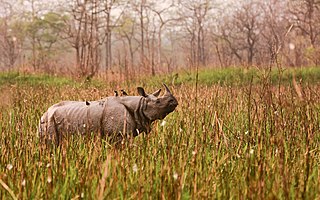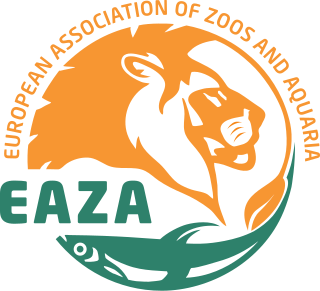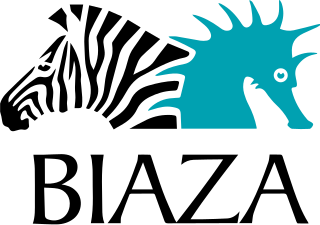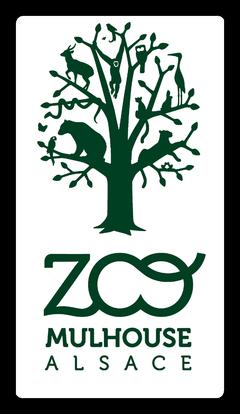This is an index of conservation topics. It is an alphabetical index of articles relating to conservation biology and conservation of the natural environment.

Marwell Zoo is a 140-acre (57 ha) zoo situated in Colden Common near Winchester, in the English county of Hampshire. It is owned and run by the registered charity Marwell Wildlife. The zoo is home to 1,208 animals of 149 species. The charity undertakes a range of educational and conservation activities, with a particular focus on Africa in addition to work from its base.

Captive breeding, also known as captive propagation, is the process of keeping plants or animals in controlled environments, such as wildlife reserves, zoos, botanic gardens, and other conservation facilities. It is sometimes employed to help species that are being threatened by the effects of human activities such as climate change, habitat loss, fragmentation, overhunting or fishing, pollution, predation, disease, and parasitism.

Orang National Park is a national park in India located on the northern bank of the Brahmaputra River in the Darrang and Sonitpur districts of Assam. It covers an area of 79.28 km2 (30.61 sq mi). It was established as a sanctuary in 1985 and declared a national park on 13 April 1999. It is rich in flora and fauna, including great Indian rhinoceros, pygmy hog, Asian elephant, wild water buffalo and the Bengal tiger. It is the only stronghold of the rhinoceros on the north bank of the Brahmaputra.
Zoo Landau in der Pfalz is a 4-hectare (9.9-acre) zoo in Landau in der Pfalz, Germany. It was founded in 1904. The governing body is the municipality of the city of Landau in der Pfalz (Landau/Palatinate/Germany). The zoo is situated in the city center, along the historic remains of a French fort. The average yearly number of paying visitors is between 155,000 and 170,000. The zoo is home to about 600 animals representing 110 species of mammals, birds, reptiles, amphibians, fish, and invertebrates. The current total number of employees is 20.

The European Association of Zoos and Aquaria (EAZA) is an organisation for the European zoo and aquarium community that links over 340 member organisations in 41 countries. EAZA membership is open to all zoos and aquaria across Europe that comply with EAZA's standards. The organisation is administered and headquartered at Natura Artis Magistra in Amsterdam, the Netherlands.

Nandankanan Zoological Park is a 437-hectare (1,080-acre) zoo and botanical garden located in Baranga village, Odisha, India. It is 10 km to south of Cuttack and 10 km north of Bhubaneswar. Established in 1960, it was opened to the public in 1979 and became the first zoo in India to join World Association of Zoos and Aquariums (WAZA) in 2009. It also contains a botanical garden and part of it has been declared a sanctuary. Nandankanan, literally meaning The Garden of Heaven, is located in the environs of the Chandaka forest, and includes the 134-acre (54 ha) Kanjia lake.
Canada's Accredited Zoos and Aquariums is an accreditation and advocacy organization representing zoos and aquariums within Canada. The organization states that its member zoos and aquariums care for more than 100,000 individual animals representing over 2000 species of wildlife, observed by an estimated 11 million visitors each year. The organization is a member of the International Union for Conservation of Nature and the World Association of Zoos and Aquariums.

The British and Irish Association of Zoos and Aquariums (BIAZA) is a registered charity and the professional body representing over 100 zoos and aquariums in Britain and Ireland.

The Central Zoo Authority (CZA) is the body of the Government of India responsible for oversight of zoos. It is an affiliate member of the World Association of Zoos and Aquariums (WAZA).
The Japanese Association of Zoos and Aquariums is an organisation for the zoo and aquarium community in Japan. As of April 30, 2021, JAZA has 90 member zoos and 50 member aquariums. JAZA seeks to protect nature and animals through educational and conservation outreach.
The Amphibian Ark is an organization that focuses on the conservation of amphibian populations by planning and implementing ex situ programs in zoos and wildlife organizations around the world.
The EAZA Ex-situ Programme (EEP) is a population management and conservation programme by European Association of Zoos and Aquaria (EAZA) for wild animals living in European zoos. The programme was formerly known as the European Endangered Species Programme.

Species360, founded in 1974, an international non-profit organization that maintains an online database of wild animals under human care. As of 2023, the organization serves more than 1,300 zoos, aquariums and zoological associations on six continents and in 102 countries worldwide. The organization provides its members with zoological data collection and management software called ZIMS—the Zoological Information Management System.

Southeast Asian Zoo Association (SEAZA) is the regional organization of zoos for Southeast Asia. It represents around 90 different conservatories and zoos in Southeast Asia. SEAZA became a member of the World Association of Zoos and Aquariums (WAZA) in 1990. SEAZA Headquarters are currently located in Taiwan. SEAZA is considered a sister organization to the South Asian Zoo Association for Regional Cooperation (SAZARC), which organizes zoos in Nepal, India and other countries in South Asia. Although they preside over two similar regions, the cultures and policies of the regions are too different for a single organization to govern both. The main goals of the SEAZA are to, "Strengthen in-situ conservation and management plans, to increase captive breading through research, to improve standards of non human animal welfare, to provide better recreational learning experiences for zoo visitors, to educate the public about the importance of wildlife conservation, and to promote tourism in Southeast Asia." Achieving SEAZA's goals is particularly important as Southeast Asia is one of the most biologically diverse regions in the world, but rapid, recent economic growth of these countries has caused this rare ecosystem to be put in jeopardy. However, today SEAZA is facing significant challenges that is putting its future viability in jeopardy.

The Mulhouse Zoological and Botanical Park is a French zoological park located in the Grand Est region in the departement of Haut-Rhin, in the southeast of the city of Mulhouse, district of Rebberg. Created in 1868 by philanthropists industrialists, led by Charles Thierry-Mieg son, he was successively the property of the Cercle mulhousien, of the Industrial Society of Mulhouse, and then of the City from 1893. It is now managed by the agglomeration community of Mulhouse region, Mulhouse Alsace Agglomération. Its director is, since 2010, the veterinary Brice Lefaux.

Wild Planet Trust, formerly known as the Whitley Wildlife Conservation Trust (WWCT), is a registered charity, set up to run Paignton Zoo after the death of its founder, Herbert Whitley, who established the zoo on his estate at Primley, Paignton in Devon in the 1920s.

The breeding programs at Zoo Basel have had many highlights since the zoo's opening in 1874. These include the worldwide first zoo births of an Indian rhinoceros and greater flamingo hatch, as well as the first European gorilla birth. Due to Zoo Basel's successful breeding programs, it manages the international studbook for the Indian rhinoceros and the pygmy hippopotamus, as well as several European studbooks.
Manfred Niekisch is a German biologist. He was professor for international nature conservation and director of Frankfurt Zoo (2008-2017).

The International Zoo Educators Association (IZE) is a non-profit organization dedicated to improving the education programmes in zoos and aquariums.













